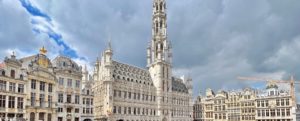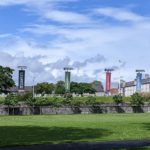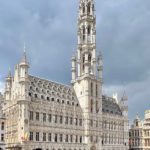Current location: Dublin
A great week
This week ended with the publication of unique content on our social media and the scheduling of other futures posts and podcasts. We also managed to lead a staff meeting in which me and Manuel as interns, together with the supervisors, discussed about how we could organise and present our website and programme offers during the International Education Week in November. This week is a global awareness initiative and an invitation to rethink our world together, using Global Education as a tool of solidarity and change, so we are strongly willing to participate.
Dublin and the Georgian Era
Having the weekend off, I managed to book with Airbnb a very unusual tour of Georgian architecture in Dublin. Few know this aspect of the city and I was delighted to be able to discover it with my guide Ruth.
Along with Edinburgh and Bath in Britain, Dublin is one of the few cities in the British Isles where you can admire a well-preserved Georgian architectural heritage. The city acquired the elegant architectural style that distinguishes it in the 18th century, a style called “Georgian” because it developed between 1714 and 1830, during the reign of the four Kings George of England. During the 18th century Dublin grew rapidly, both in size and population; the medieval walls were destroyed and the construction of large streets and squares and residential areas began. It was a prosperous period for the city, as evidenced by the grandeur and architectural quality of the public and private buildings built at the time.
Our tour
Many of today’s main public buildings date back to this period and, among them, the most impressive are due to the architect James Gandon.
The Custom House, and the old Customs building, now converted into government offices, are considered two of the most important examples of the architecture of the capital. The exteriors are richly adorned with sculptures and heraldic coats of arms. Moving forward, we spotted the Four Courts: the building where the Four Courts of Justice reside, located along Inn’s Quay. Near them, it is possible to see the Rotunda Hospital, Europe’s first maternity hospital, built in 1750, and the King’s Inn, at the end of Henrietta Street, Dublin’s oldest Georgian street. These are just some of Gandon’s architectural successes.
During the whole route it was amazing to admire the many and very famous coloured doors. The Georgian door is a well-known symbol of “welcome” in Dublin and probably the most well-known element of Georgian style.
Many of Dublin’s Georgian doors still have the original brass fittings. The bright colours that characterise them were intended to express the individual taste of the owners of the residences, in contrast to the strict rules of the architectural style of the time.
Although Georgian doors can be found quite a bit everywhere in Dublin, the best examples can be seen in the townhouses in the Baggot Street and Leeson Street areas, and in Merrion Square and Montjoy Square.








